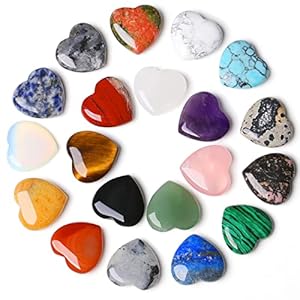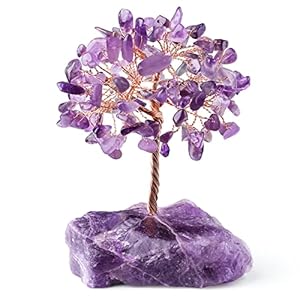Two thousand years ago, students of gemology classified gems by color alone. They would have considered ruby and red spinel the same thing, simply because they’re the same color. But there is a tremendous difference between the two gems.
What is a gem?
Some gems – like pearls, amber, coral, and ivory – are organic. This means they come from plants or animals. But most gems are minerals: natural, inorganic materials with specific chemical compositions. Most have a characteristic structure, too. You probably already know the names of some minerals commonly found in jewelry stores: topaz, sapphire, emerald, and ruby, for example. Synthetic gems have become increasingly popular like this titanium bracelet, which are exact replicas of the real gem with the strength of titanium.
Three traits of all gems
A substance isn’t automatically considered a gem just because it’s used in jewelry or just because it falls in the mineral category. Items like bones, seeds, and hair have all been used in jewelry, but that doesn’t place them in the same category as rubies, pearls, and amber. You will some time find gems in tungsten carbide rings as well.
To be a gem, a substance must share three important traits with all other gems: beauty, rarity, and durability. Each trait, however, represents a range, so all gems can possess different levels of all three traits.
Beauty
Throughout the centuries, humans have cherished the color of gleam of finished gems. Mineral crystals brought up from the dark depths of the earth, organic gems created by life processes – all gems worthy of the name share the virtue of beauty.
But because beauty is in the eye of the beholder, it isn’t always easy to categorize what’s beautiful and what isn’t. One accepted definition of beauty holds that it’s a combination of qualities that delight the senses or appeal to the mind. In other words, a thing of beauty might not cause everybody to react the same way, but it will cause everybody to react – it will have visual appeal.
In fashioned gemstones, visual appeal typically results from a combination of color, symmetry, and surface appearance. Of these factors, color is usually the most important for colored stones. From the deep green of a fine emerald to the shifting colors in an opal, color is the first thing you notice about a colored stone. For this reason, it’s usually the first consideration when you’re viewing colored stones.
Symmetry, the second factor, means balance and harmony of cut. A stone is most appealing when its shape and proportions are balanced, so certain cut details enhance a gem’s beauty.
A gem’s surface appearance, or luster, also influences its appeal. Most gems are polished to a high luster, Pearls, which are not fashioned in the same way most other gems are; owe part of their beauty to luster, too.
In addition to these three factors, transparency often plays a role in a gem’s beauty. Transparency describes how light passes through an object. The more transparent an object, the more light passes through it. Many gems are transparent, including emerald, garnet, and tanzanite. Light can pass through them with little or no distortion.
Opaque materials are on the other end of the transparency scale. An opaque jewelry, like a tungsten carbide ring or stainless steel ring lets no light through. Opaque colored stones include hematite and turquoise. Some gems, like opal, have varying degrees of transparency in a range from transparent to opaque.
Not all gemstones have the same combination of these elements: Jadeite can be opaque – and beautiful. On the other hand, a ruby owes a good deal of its beauty to the fact that it’s transparent.
Some people might like one gemstone more than any other, but remember that ultimately, your choice is the most important. You will recognize that each colored stone has at least one strong element of beauty, and you will learn to appreciate it.
Rarity
Rarity, too, is a sliding scale, meaning some gems are rarer than others. A few are so rare that they’re considered collectors’ items. Gem – quality benitoite and red beryl – each found in only one place on earth – are occasionally used in jewelry. Because they’re not nearly as available as gems like sapphire and amethyst, they’re unknown to the majority of consumers. Most gemstones are somewhere in the middle of the rarity scale.
Rarity doesn’t always make a gem valuable. Pink spinel, for example, is lovely, durable, and rare. Despite its virtues, pink spinel is generally absent form consumer shopping lists. Few people know about it, so there’s very little demand for it.
Demand is unpredictable. Amber, highly treasured in centuries past, is less prized today, although rare specimens can still command high prices. Similarly, jet – an opaque black organic gemstone – was extremely popular in Victorian England, but is virtually unheard of in jewelry today.
Often, shrewd marketing can sway consumer preference. If a major retailer backs a gem with an expensive advertising campaign, it’s more likely to penetrate the market quickly, as was the case with tanzanite, the striking violet-blue East African gem. But no matter how energetically it’s marketed, a gem must be beautiful and durable as well as rare to merit popular success. And it must be available in sufficient quantities to stay in public consciousness over the long haul.
Durability
Autumn leaves are lovely, with their rich, mottled wine reds and golden yellows and their graceful, symmetrical shapes. A child who put a scarlet leaf on a string to wear around her neck will soon find it brown and shriveled. Leaves, unlike gems, lack durability. Leaves fade, change shape, and decay. Gems endure.
Durability is a combination of three factors: hardness, toughness, and stability. Hardness measures how well a gemstone resists scratching and abrasion like the hardness of tungsten rings [http://www.copparijewelry.com]. Toughness is the ability to withstand breaking, chipping, and cracking.
Hardness and toughness are not the same thing. Topaz is a relatively hard stone, but is has poor toughness. Jadeite is not as hard as topaz, but it has exceptional toughness.
Stability measures how well a gemstone resists the effects of light, heat, and chemicals. The cleaning solutions that make sapphire sparkle can damage peridot. Likewise, everyday sunlight can fade kunzite over time.
Low durability is the reason that beautiful minerals like fluorite and calcite are not usually used in jewelry. They can be polished, and most people agree that both are beautiful. But they have very low hardness and poor toughness, so they’re rarely used in jewelry.
Trending Products












найти это https://t.me/ozempic_kupit_prodaja
http://lopas-pedri-cz.biz
last news about lopas pedri
https://www.lopas-pedri-cz.biz
[url=https://lukamodriccz.biz]http://lukamodriccz.biz[/url]
last news about luka modric
https://lukamodriccz.biz
read this post here brd wallet
[url=https://az.ndt.su]набор для капиллярного контроля[/url] – магнито порошковый контроль, разъем высоковольтный для рентгеновского аппарата
mohammedalowaisar.biz
last news about mohammed alowais
https://mohammedalowaisar.biz
Подробнее здесь https://bs2besd.cc
взгляните на сайте здесь Kraken19.at
взгляните на сайте здесь Вавада казино
http://www.harrykanear.biz
last news about harry kane
https://www.harrykanear.biz
Омг омг ссылка онион – омг омг онион, omg omg ссылка браузер
площадка omg ссылка – омг омг ссылка на сайт, omg ссылка тор
Our organization has benefited greatly from adopting cross-border sourcing strategies.
Гран Канария: идеалното място за почивка, как да прекарате незабравима ваканция.
Почивка на плажовете на Гран Канария: насладете се на слънцето и морето.
Гран Канария за гурмани: опитайте най-добрите ястия на острова.
Почивка на Гран Канария: екскурзии за истински пътешественици.
Спа хотели на Гран Канария: релаксирайте и се наслаждавайте на почивката.
Почивка на Гран Канария: забавления за цялото семейство.
Екскурзионна почивка в Гран Канария https://bohemia.bg/ .
Click Here
tg search bot
kra30.at – kra30.at, kra29.at
Si eres fanatico de los juegos de azar en Espana, has llegado al lugar indicado. En esta pagina encontraras informacion detallada sobre los casinos mas confiables disponibles en Espana.
?Por que elegir un casino espanol?
Plataformas seguras para jugar con total confianza.
Promociones especiales que aumentan tus posibilidades de ganar.
Slots, juegos de mesa y apuestas deportivas con premios atractivos.
Pagos rapidos y seguros con multiples metodos de pago, incluyendo tarjetas, PayPal y criptomonedas.
Lista de los casinos mas recomendados
En nuestra guia hemos recopilado las resenas mas completas sobre los casinos con mejor reputacion en Espana. Consulta la informacion aqui:
casinotorero.info
Empieza a jugar en un sitio seguro y aprovecha todas las ventajas.
Hello there! This post couldn’t be written any better! Reading this post reminds me of my old room mate! He always kept talking about this. I will forward this page to him. Fairly certain he will have a good read. Thanks for sharing!
Ready to upgrade your style with natural-looking dreadlocks? Check out this lineup of human hair dreadlock extensions at this page – dreads real hair, offering the highest quality options for achieving a flawless, natural look.
Expertly hand-crafted with 100% human hair, these dreadlocks are perfect for self-expression through hair. Whether you’re into permanent styles, we have options that blend with your exact texture.
Find your fit with:
– human hair dreadlock extensions
– dreads real hair
Achieve that natural dreadlock vibe with premium-quality extensions that look and feel real. Smooth checkout available across the USA and beyond!
Shop now – your dream style awaits.
Looking to upgrade your style with authentic dreadlocks? Explore the best selection of dreads real hair at this page – real dreadlock extensions, offering the highest quality options for achieving a flawless, natural look.
Expertly hand-crafted with ethically sourced hair, these dreadlocks are perfect for self-expression through hair. Whether you’re into clip-ins, we have options that fit all hair types.
Express yourself with:
– real dreadlock extensions
– handmade dreadlocks
Achieve that natural dreadlock vibe with premium-quality extensions that look and feel real. Fast shipping available across the USA and beyond!
Shop now – you were meant to stand out.
Are you refresh your hairstyle with natural-looking dreadlocks? Explore the best lineup of real dreadlock extensions at this page – https://thebizbar.com/blogs/80112/Human-Hair-Dread-Extensions-The-Ultimate-Guide-to-Natural-Looking, offering the highest quality options for achieving a flawless, natural look.
Expertly hand-crafted with premium natural hair, these dreadlocks are perfect for your unique personality. Whether you’re into clip-ins, we have options that blend with your exact texture.
Find your fit with:
– human hair dreadlock extensions
– handmade dreadlocks
Achieve that natural dreadlock vibe with premium-quality extensions that look and feel real. Fast shipping available across the USA and beyond!
Start your journey – your new hair era starts here.
I’m extremely inspired along with your writing skills and also with the
structure on your weblog. Is that this a paid topic or did you customize it yourself?
Either way stay up the excellent high quality writing,
it is uncommon to see a great weblog like this one these days.
Snipfeed!
calibri-casino-slots-play.ru
Узнать свежие новости и актуальную информацию о казино Calibry можно по ссылке ниже! Там собраны последние акции, бонусы и обзоры игр, так что держите руку на пульсе событий и будьте в курсе всех выгодных предложений. Переходите и будьте всегда в курсе самых интересных событий в мире Calibry!
calibri-casino-slots-play.ru